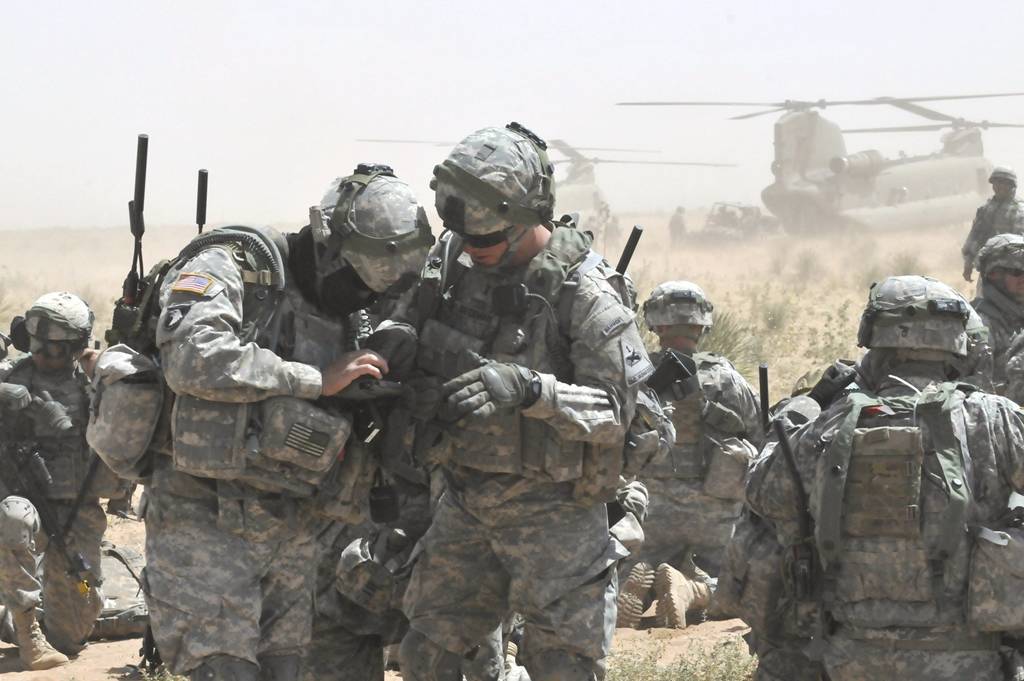
FORT BLISS, Texas (Nov. 10, 2014) — The Brigade Modernization Command has completed their latest field test of the second increment of the Warfighter Information Network-tactical communication system, a Force 2025 initiative that will push real-time intelligence down to a maneuver brigade’s company level for the first time.
Network Integration Evaluation 15.1 is the eighth iteration of the semi-annual field test, in which 3,900 Soldiers and 1,200 government employees put multiple pieces of equipment through its paces in the rough Fort Bliss terrain, from Oct 3 to Nov. 4, not just to refine tactics, techniques and procedures for the equipment, but also to push the capabilities of the communication network to the limit.
“It’s amazing what the Soldiers are able to do with these systems,” said Maj. Gen. Peter Utley, commanding general of the U.S. Army Test and Evaluation Command. “They are able to find other capabilities and really maximize the capabilities of these systems far beyond what we thought they could do.”
The new network will provide actionable information in a manner that is easy to process, allowing commanders on the ground to have greater awareness of the battlefield around them and the assets at their disposal, which will in turn make the unit more agile and flexible as part of the Army’s transformation.

A Stryker vehicle integrated with the Warfighter Information Network-Tactical (WIN-T) Increment 2. (Photo Credit: U.S. Army)
While each piece of equipment went through developmental testing before originally coming to NIE, the exercise has reached a point now where Soldiers, most of whom come from 2nd Brigade, 1st Armored Division, are familiar enough with the equipment from past NIEs to see improvements in the system and build upon past experience to expand what they can do well past the limitations of a lab, according to Col. Jim Crider, BMC’s deputy commander.
“When you put things out in the field, and you get a rain storm, or the wind blows 20 or 30 knots, or it gets in the heat, it performs differently,” Crider said. “This area is more than just desert. There’s undulating terrain, high mountains, narrow and wide passes … all of which makes this an ideal location to conduct evaluations.”
The main tests for the WIN-T Inc. 2 system are its simplicity and interoperability. The network of computers and radios is designed to easily work with current systems and adapt to the technology of America’s allies and even future pieces of equipment. Brig. Gen. Timothy Coffin, commanding general of White Sands Missile Range, New Mexico, where a large part of the NIE testing occurs, noted it was critical for the systems to communicate with as little human interface as possible, so that Soldiers could focus their attention on completing the mission.
“The promise of NIE is the ability to bring all those systems together in a seamless way, where the operator can really focus on the fight, and not fight the systems,” Brig. Gen. Coffin said. “We don’t want to add burden onto the Soldier or the commander. We want to allow them to focus their intelligence and their efforts into fighting the adversary.”
Past iterations of NIE have already proven their worth, most notably validating Capability Set 13, for the 10th Mountain Division (Light Infantry), prior to their 2014 deployment to Afghanistan. With this iteration NIE, has evaluated more than 200 systems and used those lessons learned to provide recommendations for the future of doctrine, organization, training, material, leadership, personnel and facilities to the Department of the Army.
According to Lt. Col. Timothy Gearhart of Project Manager Mission Command, the evaluation accomplishes this by putting the developers of the equipment side-by-side with the Soldiers testing the systems.
“When we can get the Soldiers, the material developers and even the combat developers — the guys who are writing the doctrine on how these future systems should be fought — all in the same place at the same time, we can do very smart things in giving the Soldier the best product today and the best product tomorrow, much faster than we have in the past,” Gearhart said.
In addition to Fort Bliss Soldiers shaping one of the initiatives designed to boost Army equipment availabilities, they are also receiving a new form of training that will prepare and improve them for future operations.
According to Utley, the knowledge Soldiers take from NIE is also increasing their creativity and flexibility in utilizing the equipment tactically: a vital trait for them to pass on as leaders.
“I feel very strongly that NIE allows us to see what is in the art of the possible as it relates to these systems,” Utley said. “We could have a system that was developed to address a specific capability but now we’re starting to see the capability for it to, perhaps, do other things beyond what we originally designed it to do.”

